Our second port in Iceland took us just over the Arctic
Circle at 66°04′ North.
Ísafjörður (Ice Fjord) is a town with a population of only about 2,500, nestled
between tall mountains scarred by glaciers that carved out the valleys below.
We didn’t spend too much time here.
Instead, we boarded a bus that took us to the next fjord and
the even smaller village of Bolungarvik, situated across the water from snow
covered hills, and below a mountain known as Traðarhyrna.
Don’t ask me how to pronounce it.
Getting there required us to drive
through a three-mile tunnel.
The tunnel is one of many in Iceland,
allowing people to move during the harsh winter months when many roads become
impassable.
The tunnel also allows the local bicycling club to practice
during the winter.
Our first stop was a little church where two young locals sang several selections in Icelandic.
The church is Lutheran, as are most in Iceland.
On the way to our next stop, we passed a
grassy field.
It’s the nesting spot for a colony of Arctic terns. I wish we
could have stopped here, but we were moving right along. As a result, my photos
didn’t capture all the birds on the ground as well as those flying around.
The terns are amazing. They migrate to
Iceland from as far away as South Africa and even Antarctica. They lay their
eggs and once their chicks are old enough, they leave here and head south
again.
Next, we stopped at Ósvör, which was once
a small fishing village, but now consists of just a few houses and an
uninspired little fishing museum.
We were met by a woman modeling the
traditional clothes worn by fishermen as they sailed these waters catching cod.
She obviously doesn’t live in the tiny reconstructed
sod-roofed huts.
One of them represented the fisherman’s home, another the
house where he would dry the fish, and the last one was the salting house.
Looking inside, it’s hard to believe
anyone could live in such cramped quarters
We headed back to Isafjordur for a walking tour, but there
wasn’t much to see.
There were three special and exclusive treats waiting for our
group at the local museum.
First came a large bowl of cod, known as harðfiskur. The fish is filleted
with the skin left attached, then hung to dry for several weeks in special fish
drying sheds.
It was surprisingly good,
somewhat stringy, and slow to soften while being chewed. Joyce compared it to
jerky.
Less tasty was the
fermented shark, or hákarl. The shark is cut into
stripes which are buried in the ground under heavy pressure for two to three
months. It was described as “an acquired taste… similar to very strong cheese
slathered in ammonia.” That’s putting it mildly. It was just awful.
So was the Icelandic schnapps
that accompanied our samples. It’s flavored with caraway, much like aquavit,
and at 80-proof, rightly called “Black Death.” One sip was enough for us.
Our final stop was a
waterfall on the outskirts of town.
It wasn’t a really memorable
waterfall, but it’s the best one in Ísafjörður.

 Ísafjörður, Iceland
Ísafjörður, Iceland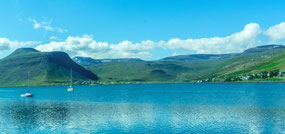

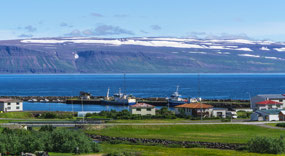
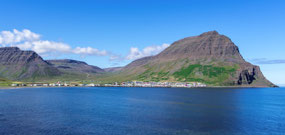
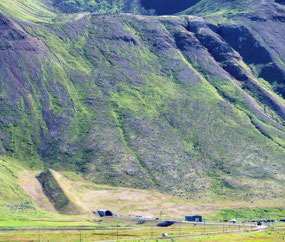
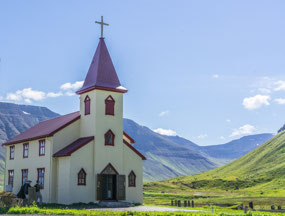
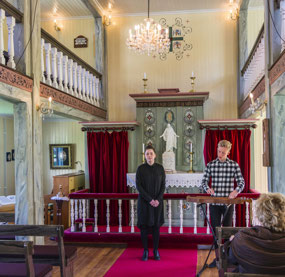
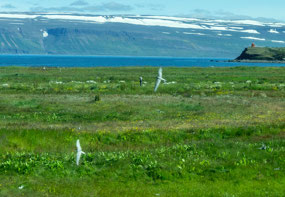

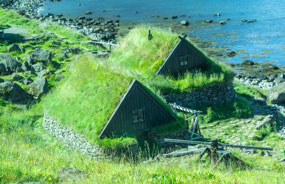
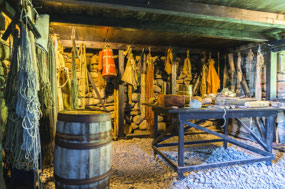
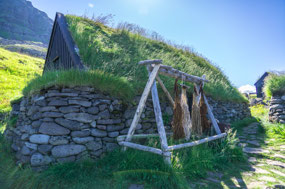
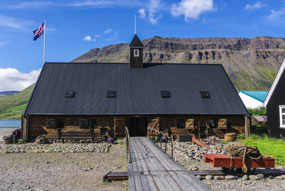
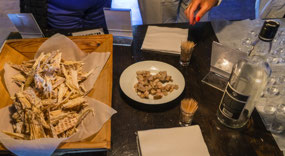
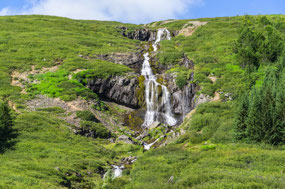






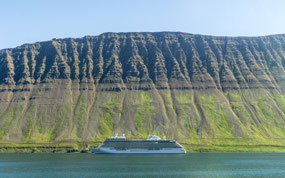
MJackson
2017-08-15
You two were brave to try those fish and alcohol offerings!
Lynda Seaver
2017-08-15
Sounds like you need a stiff shot of the Black Death to choke down that shark. Even the cod jerky sounds awful
Jeff Dunn
2017-08-15
Great sunny weather! Were there mosquitos? I'm not surprised there were tunnels on Iceland. Why do you think the Scandinavian Nobel invented dynamite?
newsbob
2017-08-28
Hi Jeff-- We didn't experience any mosquito problems, just little midges. Nobel was a chemist and engineer. From Wikipedia: Nobel also owned Bofors, which he had redirected from its previous role as primarily an iron and steel producer to a major manufacturer of cannon and other armaments. (As a boy, he was) the boy was interested in engineering, particularly explosives, learning the basic principles from his father at a young age. Alfred Nobel's interest in technology was inherited from his father, an alumnus of Royal Institute of Technology in Stockholm. Following various business failures, Nobel's father moved to Saint Petersburg in 1837 and grew successful there as a manufacturer of machine tools and explosives. He invented modern plywood and started work on the torpedo.